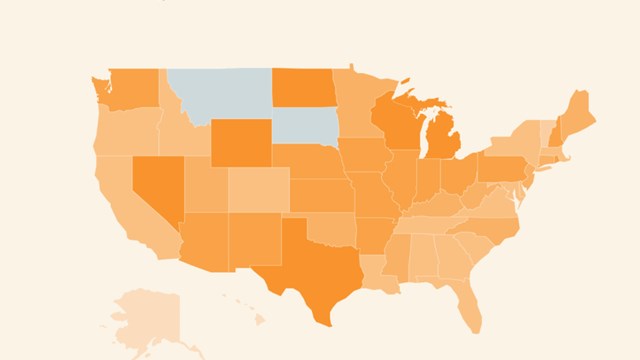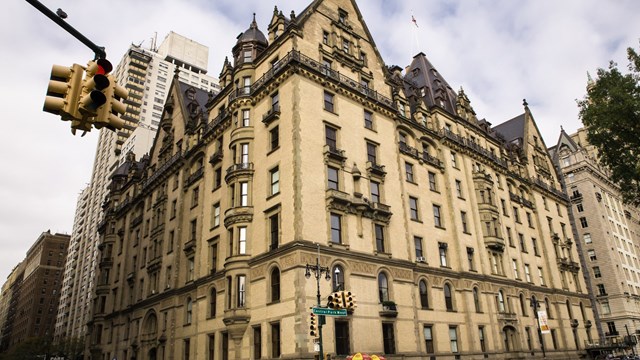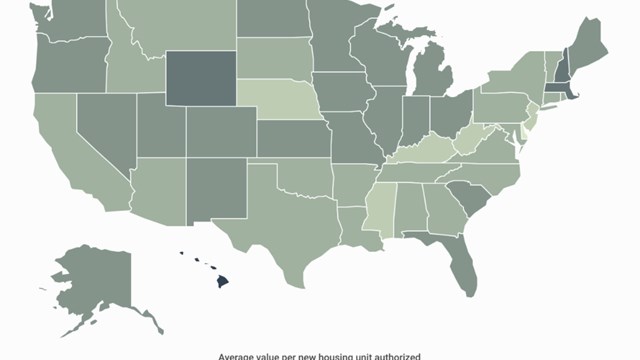The following is the text of a speech Adrienne Albert, president of Manhattan real estate brokerage firm The Marketing Directors, gave at the monthly luncheon meeting of Associated Builders and Owners this past September.
I was asked to speak about the residential market. We all know it’s hot. The questions are: How hot and for how long?
In the early and mid ’80s, real estate was hot. EVERYONE was talking about apartment prices and rents. I began to worry about the market when doormen, who were buying apartments to rent out, would ask me for investment advice. We all remember the pain of the recession in the early nineties and the climb back to a healthy market. Well, residential real estate is hot again–everybody’s talking about it. But it’s a different buzz because so little product has been built over the last ten years. This buzz is about supply and demand in a prosperous economy. As Wall Street goes, so goes real estate, and with so little supply and a booming Wall Street, residential real estate is skyrocketing!
Let’s compare today’s condominium market to that of a year ago. We use condominium transfers as a value measure because they are recorded, and the information is in the public realm. This information does not represent sales in our shop, but all condominium transfers. (We disregard bulk sales, and sales that seem to be non-arms-length transactions, and transactions that we feel may be reporting errors.) So, in the first half of 1999, approximately 2,369 units were traded versus 2,434 in 2000, for an increase in volume of less than three percent–very little change. Before you question whether that number of homes isn’t too high, if I remember correctly, there were about 2,500 new for-sale units entering the marketplace in 1984–when prices jumped 30 percent! We were grossly undersupplied then, and we are now.
The dollar volume of transactions in the first six months of 1999 was roughly $1.3 billion, as compared with $1.7 billion for the same period this year–an astounding 30 percent increase, as in 1984!
Average sales prices have jumped more than 27 percent, from $552,000 to a bit more than $700,000. Yet the average size of a home sold has grown by only two percent, from 1,104 square feet to 1,123 square feet.
Why is that? As we have been telling our developers, more than half the households in Manhattan traditionally have been single-person households. Much of the attention in the’90s market has been on larger apartments, and the demand for larger homes still exists. But as prices have risen, and more people want to get into home ownership (in part because of the rents they are paying), smaller homes have taken off! In the first half of this year, 44 percent of the homes transferred were one-bedroom units, 26 percent were two-bedroom, and 19 percent were STUDIOS! Only nine percent were three-bedroom homes, and two percent were four-bedroom or larger units. This is a function of end price, availability of homes to buy, and rental rates.
New rentals in prime areas are trading at more than $55 per square foot per year–and, in prime areas for new buildings, at more than $60. At Ocean, a gut renovation with small homes and extraordinary views downtown, we are renting homes at an average of $63 per square foot today. Our penthouses have achieved per-square-foot levels of $96, $99, and $106–done deals, not asking prices. South of 34th Street, rents at new buildings, such as The Madison Belvedere and the Paramount, are well in excess of $50 per square foot. So a small one bedroom of about 700 square feet, renting for more than $3,000 per month, would require a tenant earning about 40 times that monthly rent, $125,000 in annual salary–for starters! This person has buying power–and wants the tax benefits of home ownership!
And home ownership is in high demand all over Manhattan. The Upper East Side accounted for 36 percent of the transactions in the first half of 2000, followed by the Upper West Side, with 26 percent. Midtown East accounted for 15 percent of the activity, with Midtown West at 11 percent. Downtown scored 12 percent, and downtown does include TriBeCa. We believe this is a function of product availability as much as consumer demand.
Let’s Look at Some Highlights for Specific Areas
The Upper East Side saw such buildings as The Chatham, 90 East End Avenue, 515 Park Avenue and The Empire sell over the last year. 838 Fifth Avenue is also almost sold out. The Empire–selling at more than $1,300 per square foot on Third Avenue and 78th Street–and 838 Fifth Avenue are both pre-sold, as is Bridge Tower Place at 61st and First. There is no standing inventory. Chartwell House, at 92nd and Second, is achieving more than $600 a square foot for small-space homes, and we are selling some combined units there as buyers seek larger homes in this emerging family neighborhood. More product is planned at the Impala, at 76th and First, and the Seville, at 77th and Second, will come to the market this year.
In the first half of 2000, the average price of a home on the Upper East Side was $936,000. Approximately 560 homes were sold. Not exactly small potatoes!
The Upper West Side’s biggest news was 200 Riverside Boulevard, which sold more than 377 homes in less than two years at an average price of almost $675 a square foot. Sales in the last six months there have averaged more than $800 a square foot.
Midtown East re-sales, which include mostly older product, are interesting. One-bedroom units averaged $532 a square foot; two bedrooms, $666 per square foot; and three bedrooms, $653 per square foot. In the first six months of 1999, two bedroom re-sales only averaged $452 a square foot, a difference of $200 per square foot. The big news for this region is Trump World Tower, which is pre-selling 353 homes at a list price of $900 per square foot.
Midtown West will be hot! Chelsea is already hot, and as an extension to that, the Sixth Avenue corridor will be home to at least three new rental buildings: one by the Albanese family, one by Harry Macklowe, and one by the Adell Group/Witkoff partnership. An enclave of beautiful new buildings is being created from 23rd to 29th Streets, and activity will soar in this area. At least one new condominium is planned, and more will follow. We expect rents will be in the $50 a square foot range, and new condominium values today would be around $750 a square foot. City Prairie, on West 17th Street, is asking about $700 a square foot for loft homes averaging 5,664 square feet. Large lofts are back in Chelsea!
The Eighth Avenue corridor is also exciting, where new building rents are more than $50 a square foot. New buildings are in early construction or planning stages. The 2000 market may not feel the impact of this activity, but 2001 and 2002 will see at least two new buildings in this area–both probably rentals.
The 42nd Street area is fascinating. We are great believers in the future of this area after closely watching 42nd Street transform itself into a family entertainment mecca! We believe a future growth area will be south of 42nd Street and north of the West Village. There is development interest in this area today, and we feel this will be tomorrow’s emerging new neighborhood.
One of the most active areas of town is downtown, including TriBeCa and SoHo. TriBeCa primarily drives this for-sale market, as not much is for sale in the financial district. In the first half of 2000, resale values averaged $416 a square foot for studios, $459 a square foot for one-bedroom units, $484 a square foot for two bedrooms, almost $593 a square foot for three bedrooms, and $674 a square foot for four bedrooms and larger units.
New building values are even more exciting. The Roebling is offering homes that average 4,410 square feet for $2.2 million, or $511 per square foot. The Textile Building’s somewhat smaller homes, averaging 2,420 square feet, are selling for $1.2 million, or $533 a square foot. Then we jump to The Loft SoHo, where residences average 4,294 square feet, for a price of $3.2 million or $735 a square foot. The Julliard is at $780 a square foot for a 2,500 square-foot space. The Atalanta building is asking a whopping $815 per square foot for a home of 5,192 square feet, or $4.2 million–and, for the most part, getting it! TriBeCa is hot. Lofts are hot. Raw space is acceptable to many in downtown, although not all buyers want the hassle and open-ended expense of finishing their own spaces.
The Ritz Carlton recently opened for sale downtown at about $800 a square foot. These luxury condominiums will enjoy full hotel services. Some homes there are now priced at close to $1,000 a square foot.
And just a quick word about Alphabet Land. Have any of you tried some of the new restaurants opening there? Or driven or walked the streets on a pleasant evening? If you haven’t been there for a while, go! It’s our next hot neighborhood. The streets are packed with shops, young people, kids, dogs, music, and life! Like 42nd Street, this area is now transformed. You’ll see development entering this area soon–and it will be successful.
Harlem, or uptown, is another hot-bed of development. We’ve been involved in Harlem for more than a year–and development is exploding. Developers such as Jeff Levine and Carlton Brown are bringing first-class housing to a starving marketplace…a marketplace where earning power is up, the population is rooted and stable, and home ownership is desirable. A growing middle class will continue the demand for quality housing north of 96th Street. Infill housing, gut renovation, and new construction are all going full tilt, and enjoying rising prices and strong demand. Although still a bargain compared to south of 96th Street, this region now averages more than $300 a square foot for new construction.
What to Expect
How long will we enjoy these rising prices? My crystal ball is always cloudy when it comes to the economy, but as Wall Street goes, so goes real estate. Our beautiful island has never been economically healthier, safer, or more pleasant a place to call home than it is today. More and more people are choosing to own a home, rent a home, raise a family and work in Manhattan. And our tourist trade is a significant portion of our economic health. My husband likes to say we live in the largest theme park in the world–and he’s right! It’s great! There is no place I’d rather be than right here, and millions agree. So as long as they can afford it, they’ll choose Manhattan.
Supply, on the other hand, has been low for the past decade. We see no major change in supply for the future. The residential pace may pick up somewhat, but nowhere near the almost 8,000 new for-sale units per year we saw in 1986, or the 19,000 new for-sale units we gained in 1987, the year of the crash. This city has no standing inventory to speak of, nor are any mega projects planned, which would significantly affect the supply side of the residential market.
Our residential market follows Wall Street. When the stock market grows, our market grows. If the economy stays strong, because we have tremendous demand and low supply, our market will stay strong.
All parts of the city are active in both for-sale and for-rent product.
Although there are definite differences in areas, overall Manhattan prices average $700,000 per home and more than $550 per square foot. We are unlikely to see much new product enter the marketplace at less than $600 a square foot for condominiums, and $50 a square foot for rentals.
So, if you have a residential site, pay attention to it now. Be careful how you develop it, because even in these good times, inferior product does not do well. Today’s buyers will spend the money, but are careful about how they spend. Anything does NOT go today! And discerning purchasers will characterize tomorrow’s market as well.






Leave a Comment